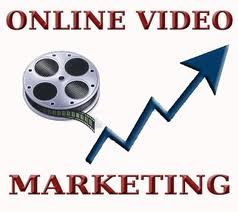This post is updated from December, 2010.
Social media presents a unique opportunity for anyone to develop a personal or business reputation to build their careers, boost sales and increase relationships. The key is to leverage the tools of the Social Media to effectively build your online reputation. You need to understand what your goals and intentions are in order to be successful.
Here are 10 ways you can be successful in this journey, so you can achieve your short and long term goals rather than waste time:
1. Be aware.Continually listen to conversations happening across the Web related to your career or business and learn from the content you read, listen to, or view online. Social media success depends as much on listening as it does on publishing.
2. Be focused.Define your niche and focus the majority of your social media participation on conversations and content related to that area of focus. A focused brand is more powerful than a broad brand. Always lead with your strengths on the social media and be consistent in your content and conversations in order to successfully build your online reputation.
3. Be authentic.Your social media participation is useless if your content and conversations read like corporate rhetoric or a promotional brochure. Instead, be real and be human. Imagine you’re speaking with your audience in person rather than online and adjust your content and tone to match your target audience’s needs and expectations for you based on your brand promise. This is where videos can be a great tool for people to really know who you are.
4. Be trustworthy.Honesty is an essential part of building your online reputation using the tools of the social media. Transparency isn’t just a buzz word, it’s a strategic imperative, which should apply to your social media participation as well as all other aspects of your career or business.
5. Be meaningful.The content you publish on social media must be useful and meaningful to your target audience or there is no reason for them to read it or start a dialogue with you about it. Furthermore, if your content doesn’t add value to your audience’s lives, they won’t talk about it and share it with their own audiences.
6. Be “non-self-promotional.”No one will want to read your content or interact with you on the social media if your content and conversations read like a marketing pitch. Follow the 90-10 rule of marketing and spend 90% or more of your time in social media activities that are not self-promotional and only 10% or less on activities that are self-promotional. When you do want to directly try to get more exposure to build your online reputation, you can do so without annoying other people.
7. Be accessible and responsive.An important part of building your online reputation via social media participation is understanding that it’s not all about you. Instead, you need to spend a great deal of time acknowledging other people on the social media in order to build a relationship with them. In other words, they need to understand that you care about them, too. You need to respond to questions, comments on your blog, tweets, and so on.
8. Be reciprocating.You can’t expect people to reach out to you and share your content on the social media and not return the favor. If someone engages with you on your blog, Twitter, Facebook or another social media destination, then you can’t ignore that person — just as you wouldn’t ignore someone in a face-to-face situation. For example, you also need to leave comments on other people’s blogs, share their content on Twitter and Facebook, and more. You can’t operate in a silo on the social media and expect to be successful.
9. Be uncontrolling.The thought of giving up control and letting your content, conversations and name spread across the Web can be frightening. However, without the sharing of content and interactive dialogue that happens on social media, your online reputation cannot develop. You have to be willing to give up control and let people share and talk about you and your content in order for your online reputation to grow. Don’t worry about negative buzz about you, your brand, or your business. There is always a way to react to negativity on the social media.
10. Be involved.Don’t spend all of your time in one place. While quality is more important than quantity when it comes to building an authentic reputation online, you do need to spread your wings and be social. Focus on other avenues such as a blog, YouTube, Google Buzz, Backlinks, and much more. You need to use all aspects of Internet Marketing in order to see return.












